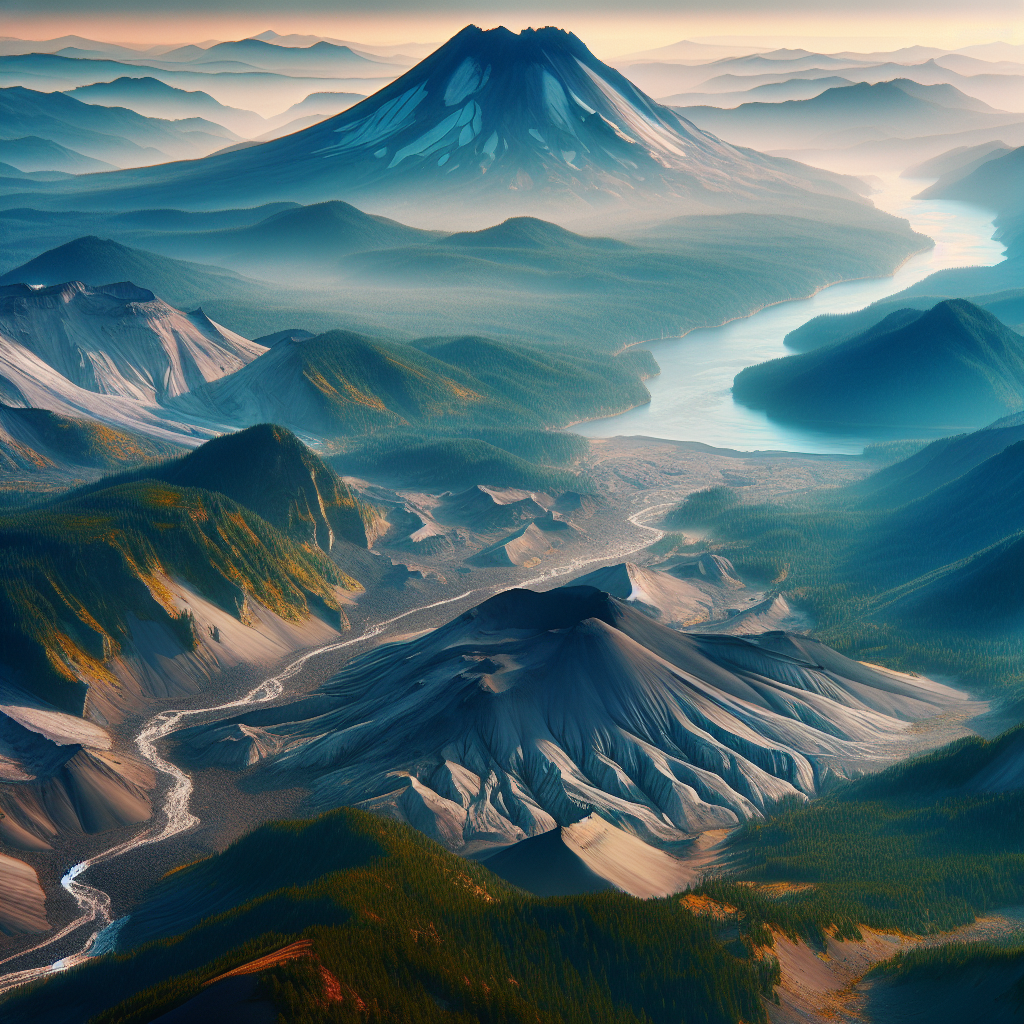Title: Walking Through Time: A Local’s Guide to Oregon’s Volcanic History and the Breathtaking Cascade Range
Section One: Setting The Scene – Ancient Oregon
Oregon is a geologist’s dream, especially when the spotlight is on the Cascade Range, a formidable chain of explosive mountains and volcanos. From the fiery birth of the mighty Three Sisters volcanoes to the more recent eruption of Mount St. Helens just across the border in Washington, these volcanic landscapes whisper tales of Oregon’s fiery past.
Section Two: The Volcanic Journey Begins at Newberry National Volcanic Monument
To start a Cascade Range volcanic tour, Newberry National Volcanic Monument near Bend, Oregon is a must-visit. It’s an unheard-of gem, far less crowded than the more famous Crater Lake. The Lava River Cave, part of the monument, is a fantastic subterranean lava tube where visitors can get an up-close look at how magma once flowed through the area. Grab a lantern at the ticket booth, but remember to take warm clothing because even in summer, those underground caves can get chilly!
Section Three: A Spectacular Stop at Mount Bachelor

Moving on, Mount Bachelor, though well-known amongst local skiers and snowboarders for its winter sports, has its roots in volcanic history. A stratovolcano born of overlapping volcanic vents, Mount Bachelor is dormant and not extinct, which means it could erupt again. Try to spot the tiny cinder cones around its base, markers of historic eruptions. Plus, don’t forget to take a scenic ride on the Mount Bachelor chairlift during the summers for an exceptional aerial view of the Cascade Range.
Section Four: Immerse Yourself in Mount Jefferson’s Magnificence
Further north stands the frozen-in-time Mount Jefferson. Observe its lava ridges and buttresses that tell tales of seismic happenings. If you’re a skilled hiker, take the Whitewater Trail No. 3429 and follow the path forged by ancient lava flows.
However, a word of caution: trails in this area can be challenging, so make sure you’re well prepared. Handy tip from the locals – Late summer is the best time to visit, as spring can still bring snow hazards.
Section Five: Look West to the Majestic Three Sisters
Moving along, locals and geologists alike have a soft spot for the Three Sisters. This trio, known as Faith, Hope, and Charity, is the third, fourth, and fifth tallest peaks in Oregon, respectively. The volcanic activity in this area has been quiet for over a thousand years, but many believe it’s just patiently biding its time.
The McKenzie Pass-Santiam Pass scenic loop is a stunning drive that’ll take you around these magnificent beauties. Remember, though, to ensure this drive is on the summer list, as the winter snow makes the route impassable and treacherous.
Section Six: The Majestic End of the Range at Mount Hood
No volcanic tour of Oregon would be complete without a stop at Mount Hood. As Oregon’s highest peak, it’s a paradise for climbers, but its charming alpine villages surround it, too. It’s been over a century since Hood’s last notable eruption, but fumaroles near the summit still whisper steamy hints of the magma that lies beneath. Just be aware that storms can roll in surprisingly quickly on Mount Hood, so always check the weather forecast if planning a climb or a hike here.
Conclusion: Farewell from an Oregon Friend
Oregon’s Cascade Range is a geologist’s paradise, an adventure lover’s playground, and a testament to Mother Nature’s raw power. It’s so much more than just our home; it’s a timeline of natural history, etched in lava and ash.
So, come explore the rich volcanic past that quite literally grounds Oregonians. We offer you the opportunity to imagine the fiery origins of these gentle, green peaks. See Oregon not just as it is today, but also as it once was: a chain of fiercely erupting, earth-shaping volcanos. A fair warning though – once bitten by the Oregon bug, you may never want to leave. Happy adventuring, and remember: take only photos and leave only footprints.
